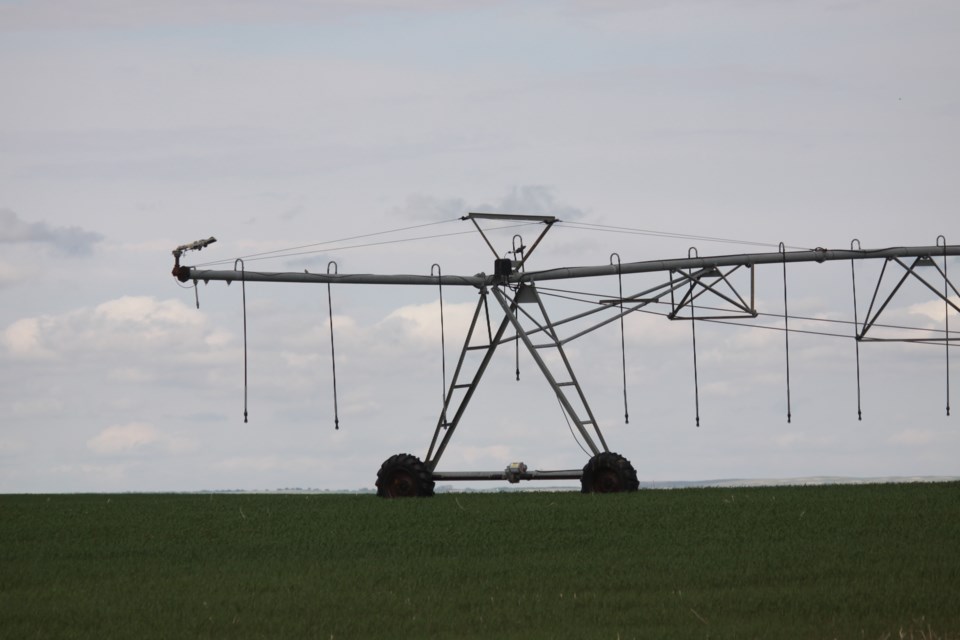A water resources scientist has a response to those people asking why invest $4 billion in irrigation for a few farmers?
The $4 billion dollar project to expand irrigation near Lake Diefenbaker will create a new platform for sustainable economic growth and environmental adaptation, Dr. Graham Parsons told a virtual irrigation conference in Saskatchewan.
The benefits of irrigation flow much further than just farmers, he said.
In Alberta’s irrigation, only 10 per cent of the benefits go to farmers. Fifty per cent go to agri-food processing with 40 per cent to other farm linkages,
Irrigation in Saskatchewan has shown how population growth occurs. Outlook area population increased 80 per cent since 1951 while nearby unirrigated districts saw populations decline.
Irrigation yields are higher than dry land and offer more secure food supplies than dry land farms. Climate change will render irrigation more important.
Irrigated crop yields for spring wheat are four times that of dry land wheat with 3.6 times the yield for barley and 24 times for potatoes.
The planned $4 billion expansion will create $46 billion in labour income and 35,000 person years of employment. A person year is one person working for one year.
Irrigation can be the next platform for Saskatchewan economic growth and diversity after development with grain, livestock, oil and gas and uranium.
Just as Prairie farmers overcame the dryness of the Palliser Triangle and the drought of the 1930s with new technologies, irrigation can adapt the province to climate change.
He said markets do exist, from replacing $600 million annually in imported vegetables that can be grown here to supplying another two billion mouths with food.
Countries around the world are losing farmland to urbanization. China lost 10 per cent of its best farmland over 25 years.
And deltas, some of the most productive farm land in the world, will be flooded as ocean levels rise.
Parsons said Saskatchewan has 2.1 million acres of potential irrigated land.
When the South Saskatchewan River Project — Gardiner Dam and Lake Diefenbaker — were developed plans were to irrigate one million acres.
Since only 100,000 acres have been developed the government investment in infrastructure “was a waste of public money.’’
Parsons developed the 2009 study recommending irrigation expansion.
Ron Walter can be reached at [email protected]



-crop2.png;w=120;h=80;mode=crop)
